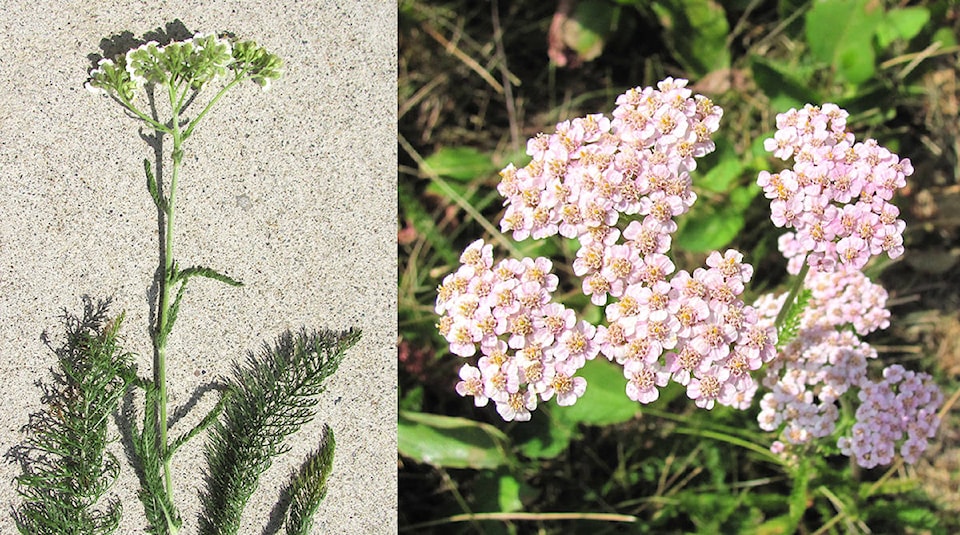The USDA (US Department of Agriculture) describes two varieties of Yarrow. Western Yarrow is listed as native to Western North America and Common Yarrow is a herbal invasive from Eurasia. Our native Western Yarrow has lacy fern-like leaves that are covered in tiny hairs.
This member of the Aster Family blooms from May to September making it a valuable addition to pollinator gardens. Its many miniature flowers that sit on a flat-top candelabra type of array, at the tip of the stem, are normally white to cream coloured. It is drought tolerant and does well in gravel or sandy soils.
Western Yarrow spreads in small scattered colonies via its roots. It is a pioneer species that shares well in diverse healthy plant communities and only becomes a problem weed on beat-up farmland or in neglected gardens.
Bighorn Sheep, Pronghorn Antelope, deer, domestic sheep and goats browse on Western Yarrow and sage grouse chicks also eat it. Horses and cattle graze on this herbal plant’s flowers, but Western Yarrow should not be a large part of their diet due to some of its strong chemicals.
First Nations healers make Yarrow tea for treating stomach complaints and wounds, and as a mosquito repellant.
Common Yarrow, (aka soldier’s woundwort, herba militaris, Knight’s milfoil, carpenter’s grass and nosebleed), is a much taller, more invasive- imported from Europe, during colonial times. Common Yarrow has smooth, or slightly hairy, lacy fern-like leaves that are rounder than those of Western Yarrow, and are evenly distributed along the stem.
Whitish Common Yarrow flowers bloom later in the growing season than its Western relative. It produces one or more stems from horizontal roots.
Common Yarrow is established well enough to be considered either native or introduced, by different North American states and provinces.
Gardeners have bred pink, purple and yellow varieties of this flowering plant.
This short-lived species can become invasive in bare well-drained soil, if not properly managed by preventing seed production.
Herbalists have used it for a wide variety of health conditions since Neanderthal times, conditions such as bleeding, infections, allergies, pain, headaches, a sleep aide, and to reduce fever.
Common Yarrow is also used as a salad green and hop substitute in beer making. This website is for a Belgian Wild Beer Recipe. https://www.ediblewildfood.com/belgium-wild-beer.aspx.
Weed Warrior Frank
